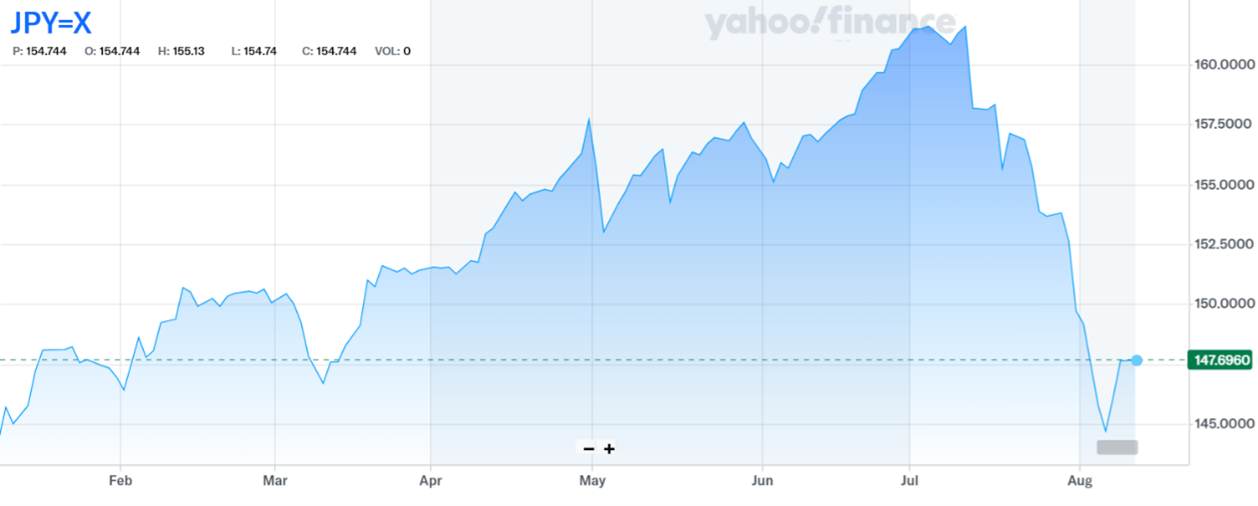Stocks are trading slightly higher in the early going, along with gold, silver, and crude oil. Treasuries and the dollar are largely flat, as is Bitcoin.
What caused the wild volatility of the last several trading sessions? “De-leveraging” is the polite term for it. But basically, hedge funds and other investors borrowed a ton of money to make big bets on stocks, currencies, and other assets. Those markets started moving against them. The added debt (or leverage) magnified losses.
So, they had to unwind their positions – in a summer market with less liquidity – FAST. By some estimates, this was the worst deleveraging episode in a decade – or more. If there’s a bright side to all of this, it’s that the lion’s share of the process may be behind us. Strategists at JPMorgan Chase & Co. (JPM) estimate 75% of the so-called “yen carry trades” that helped fuel the volatility have already been unwound.
USDJPY Chart (YTD)
Source: Yahoo Finance
This week will feature a big heaping of economic data, including the July Producer Price Index (PPI) on Tuesday and July Consumer Price Index (CPI) on Wednesday. Later in the week, we’ll get reports on July retail sales, industrial production, and capacity utilization, as well as regional manufacturing surveys and housing starts and building permits. The inflation data in particular could influence Wall Street thinking on what the Federal Reserve will do next.
Finally, we got a few “Merger Monday” announcements north of the border. Tourmaline Oil Corp. (TRMLF) will buy Crew Energy Inc. (CWEGF) for $947 million to boost its oil and gas output. Meanwhile, Gold Fields Ltd. (GFI) of South Africa is buying Canada’s Osisko Mining Inc. (OBNNF) for $1.6 billion to gain full control of the Windfall project in Quebec. GFI has all but abandoned its South African roots, expanding via acquisition in several other regions of the world instead.


















